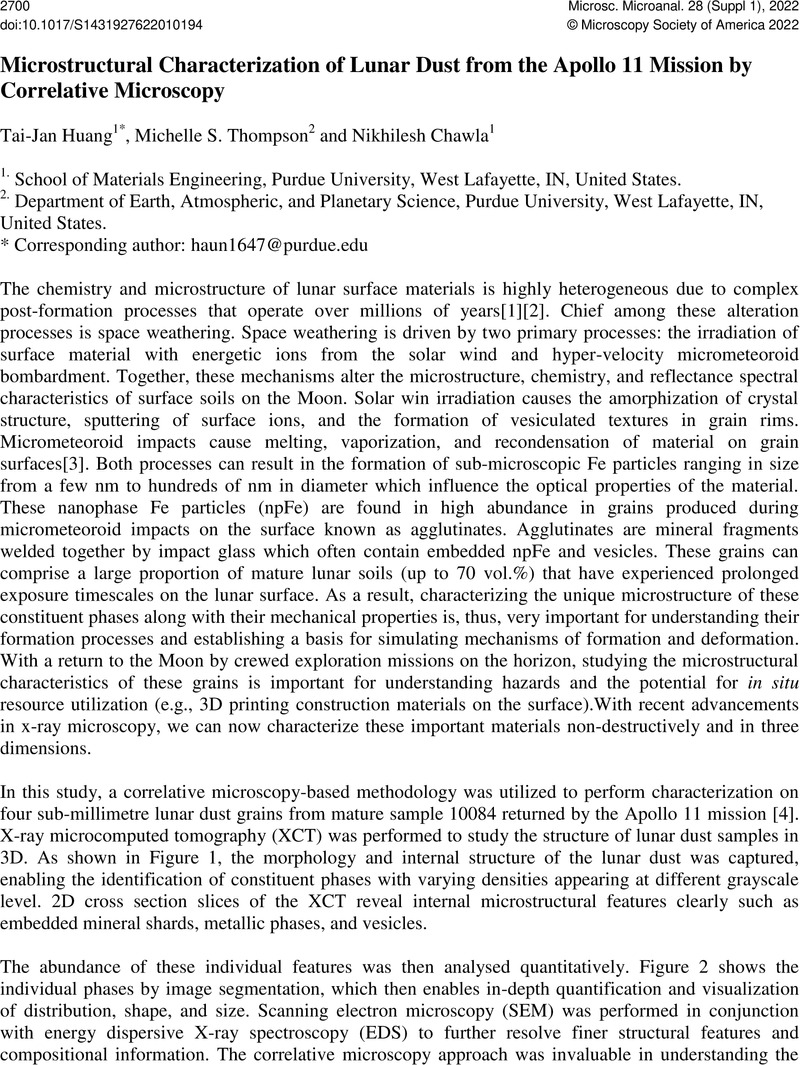No CrossRef data available.
Article contents
Microstructural Characterization of Lunar Dust from the Apollo 11 Mission by Correlative Microscopy
Published online by Cambridge University Press: 22 July 2022
Abstract
An abstract is not available for this content so a preview has been provided. As you have access to this content, a full PDF is available via the ‘Save PDF’ action button.

- Type
- Planetary-materials Characterization in the Era of Mission Returned Sample Analysis
- Information
- Copyright
- Copyright © Microscopy Society of America 2022
References
B.Hapke, “Space weathering from Mercury to the asteroid belt,” J. Geophys. Res., vol. 106, no. E5, pp. 10039–10073, 2001.10.1029/2000JE001338CrossRefGoogle Scholar
C. M.Pieters andS. K.Noble, “Space weathering on airless bodies,” J. Geophys. Res. Planets, vol. 121, no. 10, pp. 1865–1884, 2016.10.1002/2016JE005128CrossRefGoogle Scholar
L. P.Keller andD. S.McKay, “Discovery of vapor deposits in the lunar regolith,” Science (80-. )., vol. 261, no. 5126, pp. 1305–1307, 1993.10.1126/science.261.5126.1305CrossRefGoogle Scholar
“10084 Bulk Soil (< 1 mm),” lunar curation database, 2009.Google Scholar





